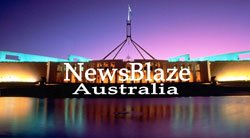Bosnia-Herzegovina - Telecoms, Mobile and Broadband - Statistics and Analyses
Bosnia-Herzegovina’s MNOs delay 5G launch
Sydney, May 06, 2022 (GLOBE NEWSWIRE) -- Just released, this edition of BuddeComm report outlines the latest developments and key trends in the telecoms markets. - https://www.budde.com.au/Research/Bosnia-Herzegovina-Telecoms-Mobile-and-Broadband-Statistics-and-Analyses/?utm_source=GNW
GDP growth was inconsistent for several years before 2015, since when the economy had grown at above 3% annually. The measures taken to address the spread of Covid-19 in 2020, which affected trade and tourism, led to GDP growth being negative 5.5% in 2020, though the IMF anticipated that growth of 3.5% was possible for 2021. This is predicated on the virus being controlled, and a return to normal economic activity. There nevertheless remain some significant challenges, not least of which is high unemployment which continues to hinder the country’s economic growth potential.
The telecom market has been liberalised and a regulatory framework created based on the EU’s regulatory framework for communications. Although Bosnia-Herzegovina remains an EU candidate country, in July 2017 it applied amended mobile roaming charges to fit in with changes introduced across the Union. Further roaming agreements were made in 2019 with other western Balkan countries
The market is characterised by three zones, each with an incumbent telco. The largest operator BH Telecom is the dominant provider, while Telekom Srpske operates in Republika Srpska and HT Mostar is active in Herzegovina. Together, these three incumbent operators control 99% of the market. All three are subject to specific obligations designed to improve competition.
The fixed-line broadband network is comparatively underdeveloped, with the result that investments made in mobile upgrades by BH Telecom and Telekom Srpske are facilitating broadband connectivity in the country to a greater extent than is common elsewhere in Europe.
Internet services are available through the incumbents and a number of alternative operators. DSL and cable are the main platforms for fixed-line connectivity, while fibre broadband as yet has only a small market presence.
The three MNOs, each affiliated with one of the incumbent fixed-line operators, provide national coverage with 3G, though LTE coverage is only about 89%. Their upgraded networks are helping to support broadband in rural areas where fixed-line infrastructure is insufficient. In addition, mobile data and mobile broadband offers will provide future revenue growth given the limited potential of mobile voice services. Although the MNOs tested LTE services under trial licenses from 2013, commercial launches were delayed until the award of spectrum in early 2019. The regulator stipulated that licensees must provide national coverage within five years. Trials of 5G technology have been undertaken, though there are no plans to launch services commercially in the short term, given that the MNOs can continue to exploit the capacity of their existing LTE networks.
BuddeComm notes that the Covid-19 pandemic continues to have a significant impact on the telecoms market. On the consumer side, spending on telecoms services and devices is under pressure from the financial effect of large-scale job losses and the consequent restriction on disposable incomes. However, the crucial nature of telecom services, both for general communication as well as a tool for home-working, has offset such pressures. In many markets the net effect has been a reduced (and sometimes negative) subscriber growth, which will continue into 2021.
Overall progress towards 5G may be postponed or slowed down in some countries.
On the consumer side, spending on telecoms services and devices is under pressure from the financial effect of large-scale job losses and the consequent restriction on disposable incomes. However, the crucial nature of telecom services, both for general communication as well as a tool for home-working, will offset such pressures. In many markets the net effect should be a steady though reduced increased in subscriber growth.
Although it is challenging to predict and interpret the long-term impacts of the crisis as it develops, these have been acknowledged in the industry forecasts contained in this report.
The report also covers the responses of the telecom operators as well as government agencies and regulators as they react to the crisis to ensure that citizens can continue to make optimum use of telecom services. This can be reflected in subsidy schemes and the promotion of tele-health and tele-education, among other solutions.
Key Developments:
- BH Telecom trials 5G though commercial launch awaits market maturity;
- Telekom Srpske completes acquisition of Elta-Kabel;
- Regulator signs cross-border spectrum coordination agreements with Serbia, Montenegro, and Northern Macedonia;
- International roaming among Balkan countries to end by July 2021;
- Regulator renews mobile licenses for the MNOs;
- Report update included the regulator’s market data to December 2019, telcos’ operating and financial data to Q2 2020, Telecom maturity Index charts and analyse, assessment of the global impact of Covid-19 on the telecoms sector, recent market developments.
Companies mentioned in this report:
BH Telecom, HT Mostar, Telekom Sprske, LogoSoft
Read the full report: https://www.budde.com.au/Research/Bosnia-Herzegovina-Telecoms-Mobile-and-Broadband-Statistics-and-Analyses/?utm_source=GNW
CONTACT: Nicolas Bombourg: [email protected] Europe office: +44 207 097 1241 Oceania Office: +61 280 767 665
